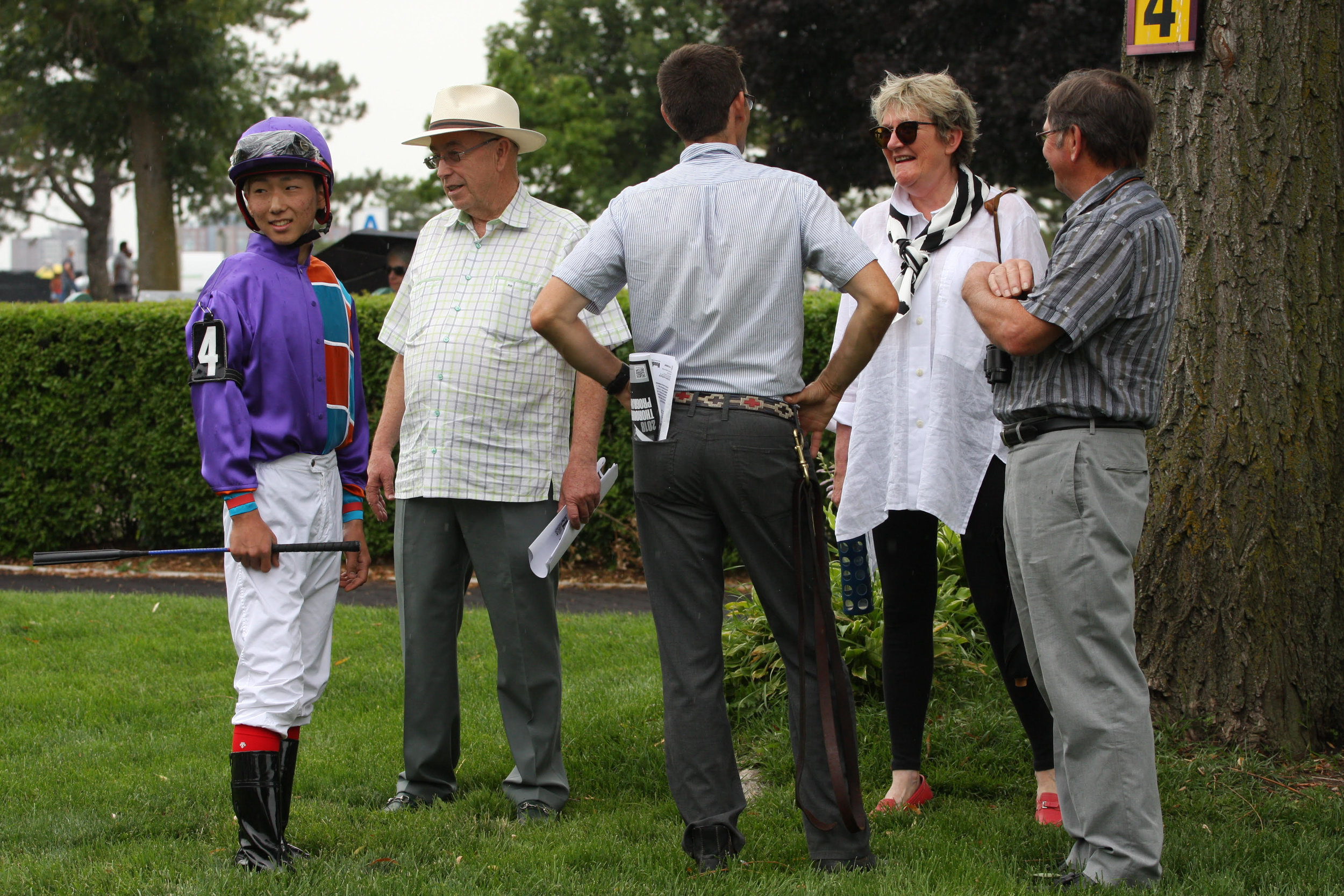Tyler Servis - like father, like son
/By Linda Dougherty
When Afleet Tizzy defeated eight rivals in winning the $100,000 Dr. Teresa Garofalo Memorial Stakes at Parx Racing August 3—one of five stakes for Pennsylvania-Breds on the Pennsylvania’s Day at the Races card—it represented the first stakes victory for young trainer Tyler Servis, the son of prominent trainer John Servis.
And not only did Tyler Servis collect his first stakes win, but he did it two races before his father won with Main Line Racing Stable and Alexandria Stable’s Someday Jones in the $100,000 Roanoke Stakes.
Afleet Tizzy wins the Garofalo
Adding to the festivities of the day was the presence of the family patriarch Joe Servis, now in his late 80s. The former jockey and steward, who rode on the West Virginia circuit and was inducted into the Charles Town Hall of Fame, was there to celebrate a birthday but ended up having a double celebration thanks to the accomplishments of his son and grandson.
“To have (my grandfather) here to see this, at his age, was awesome,” said Tyler afterwards.
John Servis echoed those words, saying, “It was a very special afternoon, not only because it was Tyler’s first stakes win and we both won a stakes on the card, but because three generations of the Servis family were there.”
Owned by Marvin Delfiner and George Krall, Afleet Tizzy is a five-year-old daughter of Tizway, bred by Blackstone Farm. Tyler Servis began training her earlier this year, and she was his second starter and second career winner, having won an allowance/optional claiming race at Parx May 14.
Sent off at odds of 7-1 in the six furlong Garofalo, Afleet Tizzy was piloted by Angel Rodriguez, who kept her about a length behind the early leaders, I’m the Talent and Zipper’s Hero, as they ding-donged through early splits of :21.93 and 44.78. She made her move at the top of the stretch when the taxing pace took its toll on the top two and stormed to the lead, drawing clear by a length and crossing the wire in 1:10.52 over betting favorite Sweet Bye and Bye with Trace of Grace, third.
The Garofalo Memorial was also the first stakes win for Afleet Tizzy, who had been second in her previous start, the Power by Far Stakes for Pennsylvania-Breds at Parx June 22. The $57,600 she earned boosted her career earnings to $374,646.







